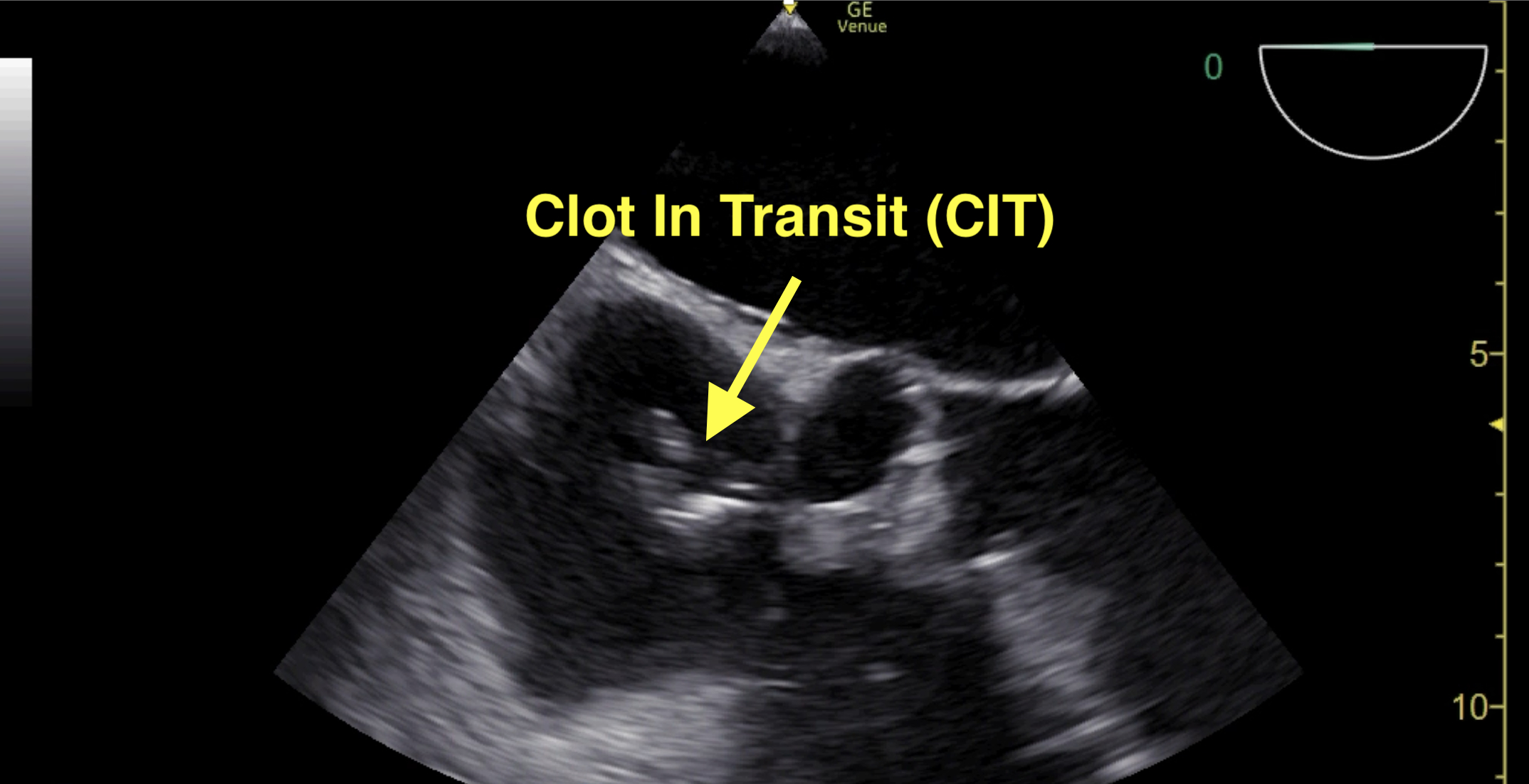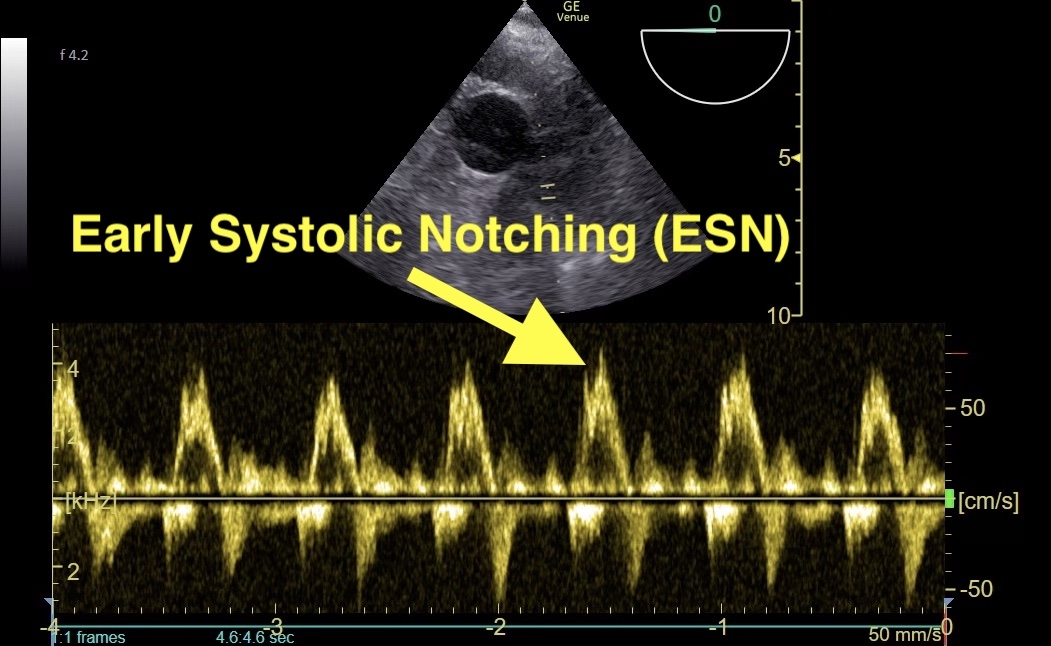Final ID: Sa1401
Acute Right Ventricular Systolic Dysfunction Diagnosed by Transesophageal Echocardiography in Patients Post-Cardiac Arrest and Undifferentiated Shock: The Role of Clot in Transit Detection
Abstract Body: Background: Pulmonary Embolism (PE) is the third leading cause of death in the United States, with mortality rates reaching 50-70% in high-risk PE and cardiac arrest-related PE, respectively. Survival in these patient populations depends on recognizing highly sensitive and specific signs of high-risk pulmonary embolism. The prevalence of clot-in-transit (CIT) ranges from 1-4% in low-risk PE but increases to over 18% in high-risk PE. CIT is highly specific (99%) for diagnosing PE and is associated with increased mortality when combined with RV dysfunction. Transesophageal echocardiography (TEE) offers unique and high-quality views of the RA-IVC and SVC junction, RV, pulmonary artery, and bifurcation to evaluate CIT and PE in cases of shock and cardiac arrest, where computed tomography pulmonary angiography is not feasible. This study seeks to determine the incidence and clinical impact of acute RV systolic dysfunction and CIT detected by TEE in patients post-cardiac arrest and in undifferentiated shock.
Methods: We conducted a retrospective analysis of a cohort of patients who underwent TEE in the intensive care setting following in-hospital and out-of-hospital cardiac arrest or presenting with undifferentiated shock between July 2022 and July 2024. The primary objective was to evaluate the incidence of acute RV systolic dysfunction and the presence of CIT. Secondary outcomes included correlations between these findings and patient outcomes, including survival and the need for advanced therapies.
Results: Among the 61 patients who underwent TEE, acute RV systolic dysfunction was identified in 31% (19/61) of cases. CIT was detected in 5% (3/61) of these patients, with all of them also exhibiting RV dysfunction. All patients with CIT received thrombolysis. Notably, early and mid-systolic notching and low RVOT velocity-time integral (VTI) was present in all cases involving CIT. None of the patients presenting with CIT survived to hospital discharge.
Conclusions: TEE plays a crucial role in the detection of acute RV systolic dysfunction and CIT in patients post-cardiac arrest and in undifferentiated shock. The presence of CIT, particularly when associated with early or mid-systolic notching or low RVOT VTI, indicates a severe and high-risk clinical scenario with high mortality requiring immediate therapeutic intervention. Further studies are needed to evaluate significance of this findings in large patient populations.
Methods: We conducted a retrospective analysis of a cohort of patients who underwent TEE in the intensive care setting following in-hospital and out-of-hospital cardiac arrest or presenting with undifferentiated shock between July 2022 and July 2024. The primary objective was to evaluate the incidence of acute RV systolic dysfunction and the presence of CIT. Secondary outcomes included correlations between these findings and patient outcomes, including survival and the need for advanced therapies.
Results: Among the 61 patients who underwent TEE, acute RV systolic dysfunction was identified in 31% (19/61) of cases. CIT was detected in 5% (3/61) of these patients, with all of them also exhibiting RV dysfunction. All patients with CIT received thrombolysis. Notably, early and mid-systolic notching and low RVOT velocity-time integral (VTI) was present in all cases involving CIT. None of the patients presenting with CIT survived to hospital discharge.
Conclusions: TEE plays a crucial role in the detection of acute RV systolic dysfunction and CIT in patients post-cardiac arrest and in undifferentiated shock. The presence of CIT, particularly when associated with early or mid-systolic notching or low RVOT VTI, indicates a severe and high-risk clinical scenario with high mortality requiring immediate therapeutic intervention. Further studies are needed to evaluate significance of this findings in large patient populations.
More abstracts on this topic:
Association between Pressure-Adjusted Heart Rate and Mortality in Cardiogenic Shock
Ginder Curtis, Jentzer Jacob, Guo Jianping, Van Diepen Sean, Katz Jason, Morrow David, Berg David
Adverse Events and Outcomes Among Patients with Temporary Mechanical Circulatory Support Devices Placed at Referring Versus Hub Cardiogenic Shock CentersPatel Zachary, Silkowski Molly, Dodson Kaylen, Bull Lindsey, Gregoski Mathew, Tedford Ryan, Mcmurray Jeffrey, Witer Lucas, Kilic Arman, Houston Brian, Carnicelli Anthony, Ospina Meg, Mittelstaedt Roxanne, Peller Jacob, Samani Stephanie, Marchell Charlotte, Ohlrich Kelly, Gunn Brady, Varrone Michael


